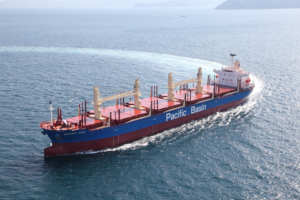
Photo: 110702588 © VanderWolfImages | Dreamstime.com
Exposure to carbon pricing may seem like a threat to some ship owners and charterers. But these incentives and penalties can also offer wide scope for profit to those that understand them fully, according to a new analysis by class society Lloyd´s Register.
The EU Emissions Trading Scheme and FuelEU Maritime can offer significant competitive advantage to owners and charterers that understand the incentives.
The aim is to encourage a switch to green fuels that will likely be more expensive than fossil fuels, accompanied by costly changes to operations.
Carbon Dioxide (CO2) emissions from ships above 5,000 gt in 2024 reported under the EU’s Monitoring, Reporting and Verification (MRV) system, will also be included in the regional Emissions Trading Scheme (ETS). Those vessels in scope of the ETS will need to buy EU Allowances (EUA) to cover half of their greenhouse gas (GHG) emissions to and from EU, Norwegian and Icelandic (EEA) ports, and all emissions for intra-EEA voyages and while at berth at EEA ports. In 2025, 40% of the CO2 emissions from voyages and at berth stays in 2024 will be subject to the ETS, ramping up to 100% in 2027. Just as the ETS phase-in ends there is a financial double-hit for shipowners. In 2026, the MRV will also require the reporting of CH4 (Methane) and N2O (Nitrous Oxide) emissions from ships, with EUAs to be paid on 100% of the CO2 equivalent of those emissions, in addition to CO2, within the ETS from 2027.
The other mechanism is FuelEU Maritime, which will come into effect in 2025. The regulation sets targets for reducing the yearly average GHG intensity of the energy used by a ship (or, crucially, by a fleet or pool of ships). The required GHG intensity reduction starts small, at -2% in 2025 (compared to a 2020 baseline), reaching -6% in 2030 and -14.5% in 2035, through to -80% by 2050. A penalty or reward is then calculated based on the extent of under- or over-performance against the vessel or fleet’s target for the year, and the cost of low-carbon fuel that would have been needed to meet the target, as Lloyds Register says in its analysis.
At first glance, it is easy to believe that the ETS, covering 100% of in-scope 2026 emissions by 2027, will have the bigger impact of the two mechanisms. FuelEU Maritime, by contrast, covers only a small percentage of emissions even as late as 2035. But analysis by Lloyd’s Register reveals that by that stage, the financial impact of FuelEU Maritime could already have overtaken the EU ETS. By 2050, the cost in FuelEU penalties could be six to eight times greater than the cost of buying EUAs.
“I think ETS is easier to understand,” says Luke Shu, Technical Manager – Maritime Commercial Markets at Lloyd’s Register. “If you emit one tonne of CO2, then you buy one allowance and you pay for that. Whereas FuelEU Maritime is entirely technical. The easiest way to see the impact is to model the compliance costs next to each other.”
Shu notes that FuelEU Maritime effectively rewards early adopters by decreasing the surplus for over-achieving compliance over time, while multiplying the penalty for failing to meet the target.
There are other opportunities too for those that grasp the full implications of the EU measures. As it is mentioned by Lloyd´s one example is the potential to offset an entire fleet or pool’s penalties with just a few over-performing vessels. This opportunity arises from the EU’s decision to allow vessels with emissions verified by the same verifier to be pooled together. This can be done regardless of shipping companies, meaning it applies to the company’s fleets or to pools of vessels owned/chartered by several companies.
The ability to pool emissions penalties and surpluses has important consequences.
“The pooling option in FuelEU Maritime means that companies investing in a zero-emission capable ship would be in a very strong bargaining position when offering to pool with other non-compliant vessels. However, depending on the type of charter party agreement the vessels were under, and especially where charterers are responsible for buying the fuel, care will be needed. The regulation does not define whether it is the owner or charterer who owns the surplus associated with a vessel, meaning that parties entering into such arrangements will need to be sure that they understand the implications to maximise their advantage,” as Lloyd´s Register further notes.


